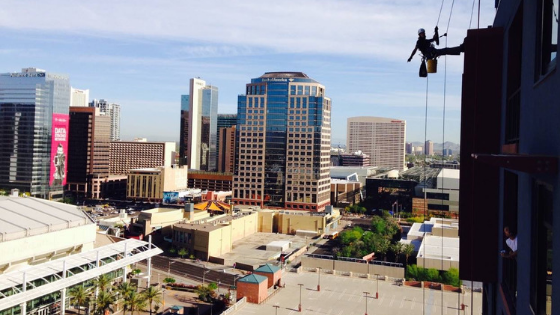
Working at height poses the grave risk of falling from the work area or being struck by a falling object. Whether the person falls from height, or he is on level ground and struck by a falling object, it can result to serious injuries or even death. This is why maintaining strict protocol and obeying work at height regulations in the workplace is so critical.
Many different factors can lead to injury-causing accidents. These include poorly maintained equipment, employees failing to inspect machinery before using them, and untrained workers, among others.
If there is a lot of clutter and unsecured equipment or tools in elevated work spaces, the risk of falling from height on people underneath becomes higher. This is particularly true if the company has yet to create an exclusion zone.
A variety of external factors like heat stress, wind, structural instability as well as worker-related factors also contribute to fall-related injuries.
What You Must Do as an Employer or Safety Engineer
First, you must make sure that each work flow is a result of proper planning. The work must be supervised and performed by qualified workers who have the knowledge, experience, and skills for the job. The type of tools and equipment appropriate for working at height must be employed in carrying out the task.
When setting up precautionary measures, you must take the sensible route. This means relatively straightforward, low-risk tasks will merit less time and effort in terms of planning. And, using your common sense, you will know that some of the low risk tasks would require minimal to no precautions at all.
Setting Up Control Measures
Risk assessment should be done first. Weigh the different factors at play such as the height of the job, the frequency and duration, as well as the condition of the work surface.
Consider the following steps before proceeding to work at height:
- Avoid working at height in areas where it is practicable and reasonable to do so.
- If you cannot avoid working at height, you can help prevent falls by using either the appropriate type of equipment, or existing work area that has been proven to be safe.
- Minimize the distance and repercussions of a fall. You can do this by using the appropriate type of equipment and tools where it is not possible to eliminate the risk completely.
For every step, always be partial to the procedures that will protect everyone exposed to the risk over measure that are designed to protect only the individual. Simply put, collective protection must prevail over personal protection.
In collective protection, it is not necessary for the individual working at height to act on the equipment to make the protection effective. Examples include temporary or permanent guardrails, tower scaffolds, and scissor lifts.
In personal protection, the equipment requires the person to act to make it effective. One example is properly wearing a safety harness, then using an energy-absorbent lanyard to connect it to an appropriate anchor point.
Working at Height Do’s and Don’ts
Following are the do’s and don’ts of working at height that you should know.
Do’s:
- Do work on the ground instead of working at height whenever possible.
- Do make sure that employees can safely get to and from the work at height area.
- Do make sure that the equipment and tools to be used are appropriate, stable, and durable enough for the task. It is also important that they are regularly checked and well-maintained.
- Do take the necessary precautionary measures when working around, near, or on fragile surfaces.
- Do give protection from falling objects.
- Do plan for emergency evacuation as well as rescue procedures.
Don’ts:
- Don’t overload ladders. Consider the materials or equipment that employees are carrying before allowing them to work at height. Check the label or pictogram printed on the ladder for info.
- Don’t over-reach on stepladders and ladders.
- Don’t rest a ladder on upper surfaces that are weak such as plastic gutters or glazing.
- Don’t use stepladders or ladders for heavy or strenuous jobs. Use them only for short duration and light tasks, e.g. half an hour at a time.
- Don’t let an unqualified worker to work at height. Make sure the individual has the knowledge, skills, and experience for the job.
Working at height comes with inherent risks. But, these risks can be minimized by observing the appropriate safety measures.






